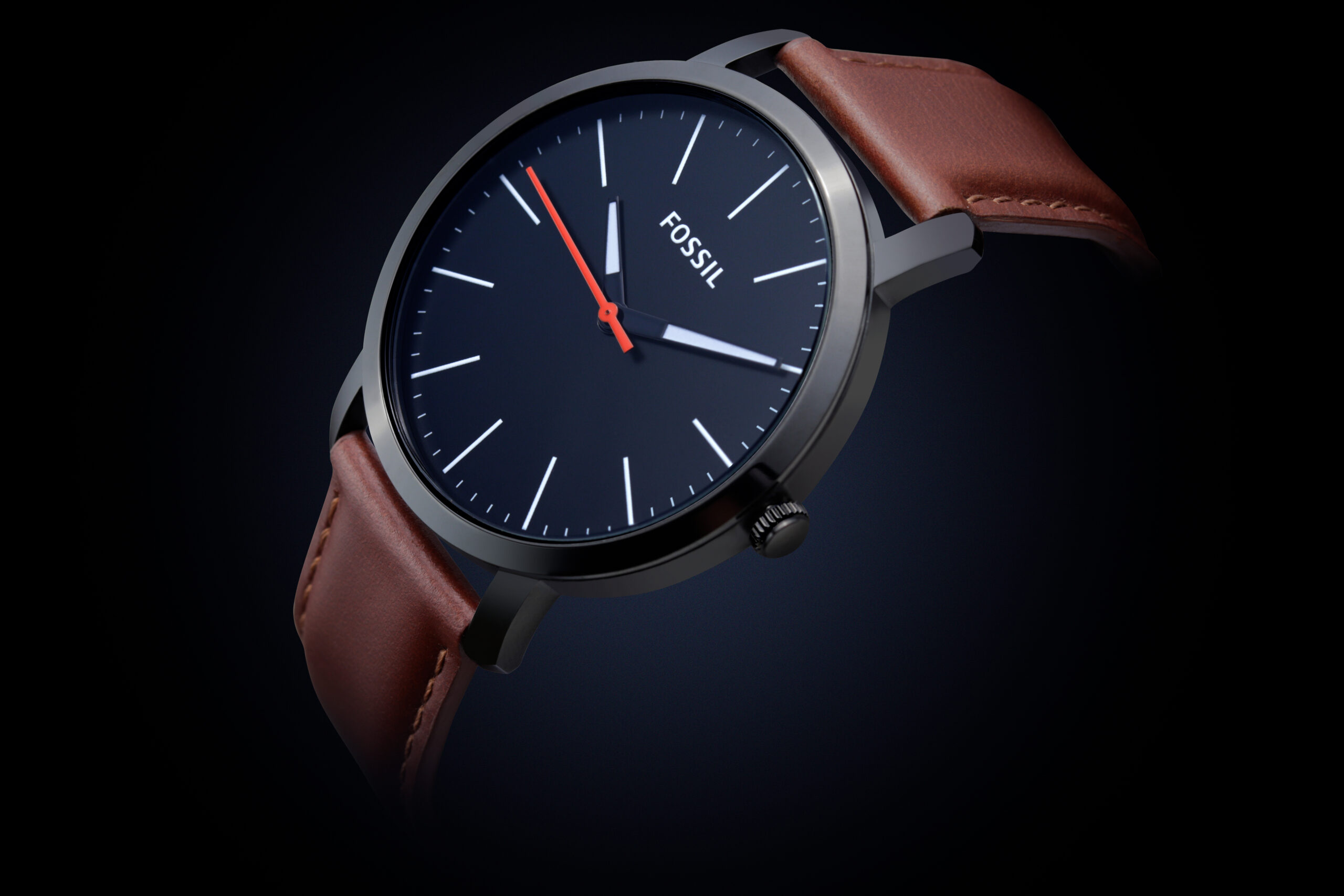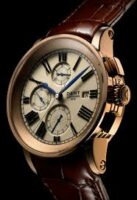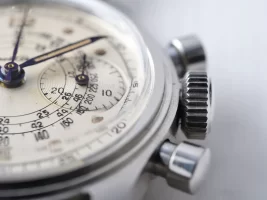










Founder Tom Kartsotis created the company to import fashion watches from China to retail in the US. Having founded the brand to import watches, along with his brother, he had soon begun importing leather goods too.
The company’s growth was rapid and in quick succession they acquired Zodiac watches, high-end Swiss brand Michele Watch and retail chain Watch Station. They’d later add Danish brand Skagen at a cost of $225M, a wearable technology company, for $260M.
It is a young brand founded in the mid-1980s. The Fossil Group owns a handful of other brands with Zodiac Watches probably being of most interest to watch fans.
As a watch manufacturer, they produce watches for a selection of household names including, Burberry, DKNY, Emporio Armani, Michael Kors and Adidas. Although positioned as a fashion watch brand they do have design studios in Biel, Switzerland and manufacturing facilities in China.
Fossil stood out as being the only fashion brand This, along with the ownership of the Swiss Zodiac Watches, has allowed them to produce Swiss-made ‘Fossil Swiss’ watches.
1984
Founded in 1984, Fossil represented the second entrepreneurial effort launched by Tom Kartsotis, a Texas A&M dropout living in Dallas.
TimeLine
1985
The Company introduces the first Fossil® brand watches.
1986
the Kartsotis brothers launched Fossil watches on the American market.
1987
Fossil, Inc., as the company was now called, was collecting $2 million in sales a year after having established a solid reputation among Texas retailers.
1988
Kosta Kartsotis joined the company in 1988, midway through the most prolific period of growth in Fossil’s short history.
1989
Fossil introduces its iconic “tin box” packaging with designs inspired by graphics from the American fifties. • The packaging is a hit with consumers and Fossil begins packaging all of its watches in tin boxes.
In 1989, the company generated $20 million in sales, having increased its revenue volume tenfold in two years, and made one important change in its marketing approach that spurred further growth in the years ahead.
1990
Fossil participates in their first Basel World watch and jewelry tradeshow in Basel, Switzerland.
they introduced leather goods under the Fossil brand, and the Relic line of watches.
1991
Macy’s opened a 300-square-foot Fossil Watch “Super Shop” in one of the most ideal locations for a small, but fast-growing company to attract attention.
1992
In order to master the acquisition of finished watches, Fossil took over a company in Hong Kong in 1992 and renamed it Fossil (East). It was responsible for supplying watches to the headquarters in America.
They also launched Skagen Denmark, a watchmaking brand.
1993
Fossil completed its initial public offering of stock, selling 20 percent of the company to investors, with Tom Kartsotis retaining 40.5 percent control over the company and his brother Kosta retaining 18.8 percent ownership.
Fossil, Inc. goes public on the NASDAQ exchange as FOSL. • Fossil launches a line of men’s small leather goods including key chains, personal organizers and wallets.
Fossil B.V. was formed in 1993 as a holding company for these three European subsidiaries, with Texas-based Fossil, Inc. controlling 70 percent of its newly formed European holding company.
They opened its capital in 1993 and adopted a strategy based on three main axes – supply control, banching out into fashion brands and distribution verticalization.
1994
The company achieved strides in each direction through three noteworthy developments.
1995
The extensive line of Fossil fashion watches were sold in department stores and in other upscale retail settings in more than 50 countries, giving the company a broad geographic foundation to support its business.
Single-brand Fossil stores were launched in 1995.
1996
Toward this end, the company acquired 81 percent of the Seiko-owned Fostim in April 1996, paying $700,000 in cash to gain greater control over the distribution of Fossil products in Japan.
1998
Fossil develops Big Tic® – a part analog, part digital watch that quickly becomes one of the company’s signature designs.
1999
Fossil, Inc. signs a worldwide licensing agreement to produce and distribute watches for DIESEL and DKNY. • Fossil launches a line of optical frames through an agreement with Safilo, one of the world’s leading eyewear manufacturers.
The company’s growth has relied on the development of online sales, the creation of a network of shops, and the acquisition of distributors.
2000
Fossil launches an extensive collection of clothing and denim sold exclusively in FOSSIL clothing stores and on fossil.com. • Fossil opens stores in UK, Germany and Singapore. • Fossil introduces jewelry in Germany.
2001
Fossil acquired Zodiac and invested in various companies that produced components and assembled watches.
2004
Fossil, Inc. acquires MICHELE watches. • Michael Kors announces a partnership with Fossil, Inc. for men and women’s timepieces. • Fossil, Inc. announces a partnership with Marc Jacobs for men and women’s timepieces. • Fossil, Inc. enters a worldwide watch licensing agreement with ADIDAS.
Purchase of Michele Watch completed the cycle by offering a high-end Swiss watch with a designer flair.
2006
Fossil publishes “Tinspiration,” a retrospective design book showcasing popular tin designs from years past. • Fossil opens its first retail store in Austria.
Fossil launched a Swiss Made collection for Georgio Armani that was exclusively sold in the shops of the Italian designer.
2007
In September, Fossil was accused of infringing a patent owned by Financial Innovations Systems, LLC, in a lawsuit filed in the Northern District of Texas.
The Watch Station International chain was purchased from Luxottica/Sunglass Hut in December 2007.
Fossil launches jewelry in the United States • Fossil launches first e-commerce site outside the United States in Germany.
2009
Fossil celebrates its 25th Anniversary with the re-issue of its most iconic watches.
2010
Fossil opens its first clothing stores outside the United States in Germany and U.K.
2012
Fossil, Inc. agreed to purchase Skagen Designs and some of its partners for approximately $225 million in cash and 150,000 Fossil shares.
2013
Fossil introduced their upscale and more expensive “Fossil Swiss” line of watches which are made in Switzerland.
2015
Fossil acquired Misfit for $260 million, with plans to incorporate Misfit’s technology into traditional-looking watches.
Please remember that this is an unofficial account of the history of this
company, Should you happen to find any mistakes with our information then
please let us know at



